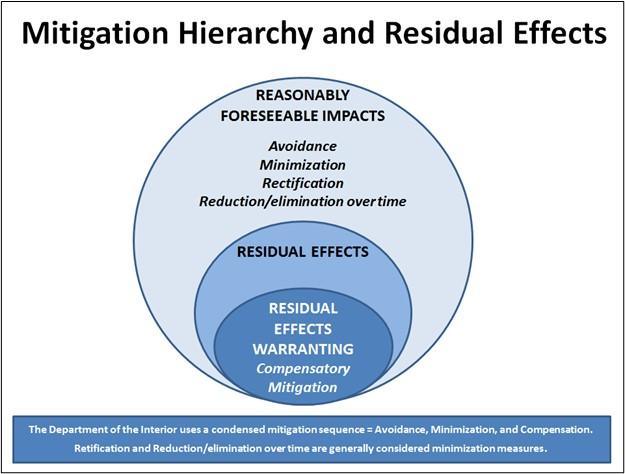
Mitigation
Supporting multiple use and sustained yield
The BLM Mitigation Policy establishes consistent principles and procedures for applying mitigation to address reasonably foreseeable impacts to resources and their values, services and/or functions, and directs the Bureau to consider mitigation well in advance of making decisions about anticipated public land uses.
The BLM takes a landscape-scale approach to mitigation, utilizing best management practices, ensuring that mitigation measures are durable, monitoring mitigation measures for compliance and effectiveness, and adaptively managing mitigation measures. It also uses best science to develop mitigation that supports the Department of the Interior's commitment to conserving and managing the Nation's natural resources and cultural heritage.
The BLM most often applies a condensed version of the CEQ definition in a step-wise manner: first seek to avoid, then minimize impacts, then compensate for remaining unavoidable, or residual, impacts.
Compensatory mitigation for residual impacts is warranted when required to (1) comply with law, regulation and policy, (2) achieve objectives in a resource management plan (RMP), or (3) conserve important, scarce or sensitive resources. Compensatory mitigation is considered after all appropriate, practical avoidance and minimization has been proposed.
Mitigation standards will be a component of an RMP's objectives for resources that are considered important or scarce, or which have a protective legal mandate. The standards should seek to achieve no net loss or a net-benefit outcome for such resources (Mitigation Handbook, Ch. 3, Sec. 3.5.D).
The BLM should not impose arbitrary or capricious mitigation measures, and will identify the impacts to which mitigation measures relate and explain how the measures avoid, minimize or compensate for these impacts.







